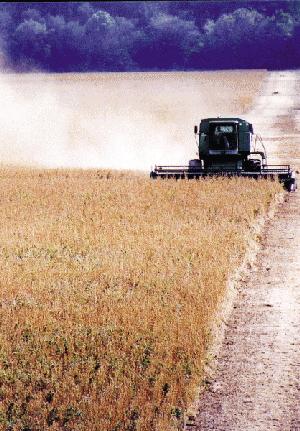
Growers who still have a portion of this year’s crop unsold should “make the market tell you when to sell,” says David Glidewell, Mid-South regional manager for ADM at Memphis.“If you’re already 50 percent to 60 percent sold, with the weather and market situation as they are today, make the market make you sell — get greedy."

With soybean prices making new highs and the Midwest drought showing little sign of easing, Mid-South soybean growers who still have a portion of this year’s crop unsold should “make the market tell you when to sell,” says David Glidewell, Mid-South regional manager for ADM at Memphis.
“Everyone has probably already sold some soybeans in the $12 to $14 per bushel range,” he said at the annual meeting of the Mississippi Soybean Association and the Mississippi Farm Bureau Federation joint soybean advisory committee meeting at Grenada, Miss.
“If you’re 50 percent to 60 percent sold, with the weather and market situation as they are today [July 23], make the market make you sell — get greedy.
“With crops burning up north of us, as long as the market’s going up, don’t sell any more. Then when it breaks back, make your next sale. That sale, nine times out of 10, will be better than the sale you were going to make following a step-up marketing program.”
Step-up marketing programs “are fantastic when you know the whole country has potential to make a crop,” Glidewell says. “But with the very tenuous balance we have now, when the market needs to see rains and weather develop that will show that it can meet the USDA yield projections, or very close to it, be stingy with the last sales you make.
“The fundamentals that were in place when we were making $12 and $13 soybean sales aren’t in place today. I’m not saying don’t sell $16 soybeans if you get the chance — that’s a great price. But if you’ve got a half, or a third, or a fourth of your crop left to sell, be stingy with it — make the market prove to you that it has stopped going up.”
Report: Corn production slashed – soybeans next shoe to drop?
Markets tend to over-react in both directions, Glidewell said in a Q&A session.
“If the market gets the perception that the U.S. average soybean yield will be only 35-36 bushels, the rationing process could be very violent to the upside. Conversely, if there were inch-type rains or more across the Midwest, I think we could see soybeans dip below $15 again. The crop could still benefit greatly from rain. But I think there’d be a pretty good appetite to own soybeans at that price.”
Looking to 2013, Glidewell says if South America, which had a short crop this season, launching the runup in prices, should have good prospects for their new crop, and if the U.S. 2012 crop should come close to the USDA July production forecast, “I think we might trade 2013 soybeans from $11.50 to $14.50 to allow for weather possibilities. These markets have huge rain potentials.
“At this point, we haven’t recommended too heavy sales of 2013 soybeans. We’ve sold about 10 percent at $13 futures and we have a recommendation to sell another 5 percent at $14. If we should see good rains in the Midwest for the current crop, we’d want to rather quickly accelerate to being 30 percent to 50 percent sold on 2013 beans. But right now, it’s a little too soon.”
Report: Drought could lead to crop delivery problems
The drought elsewhere in the country is causing extremely low water levels on the Mississippi River, which is used for transporting large volumes of Mid-South grain, Glidewell says.
“People who operate barge terminals are on pins and needles now. The big concern for producers and river terminal operators is whether they’re going to have adequate water in front of their dock to load barges. There was a temporary closure today [July 23] at Mile 730 because a tow went aground in the channel.
“Unless we see some water in the Ohio Valley or the Tennessee River Valley — which do more for our river level than rains in the Midwest — to keep the level relatively stable, we would expect some Mid-South river terminals to have close until they can get adequate water.
“We may see some terminals switching to other transportation, rail or truck, to move grain to another location that can load,” Glidewell says. “Barge shipment is the most effective, cost-efficient way to ship grain, so switching to rail or trucks would be more costly, and would be reflected in a wider basis at that particular location.
“If the river keeps falling, the likelihood of this happening will increase.”
About the Author(s)
You May Also Like



